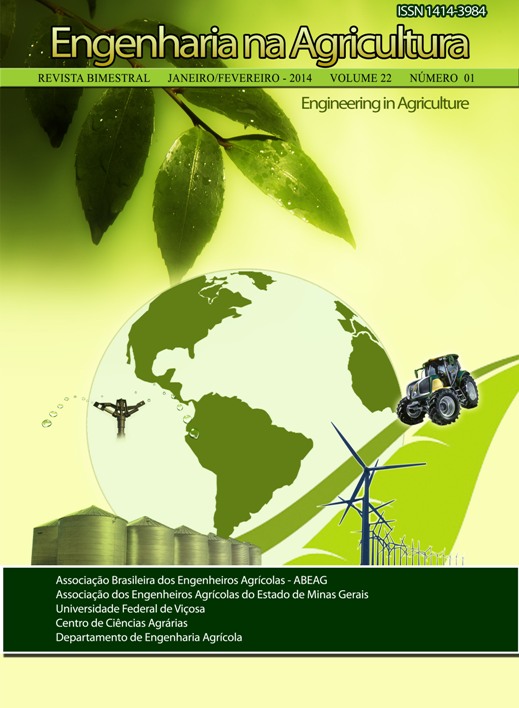EVALUATION OF TREATMENT AND EFFECT SYSTEM DAIRY WASTE GENERATED IN PHYSICAL AND CHEMICAL ATIBUTOS AN ULTISOL - DOI: 10.13083/1414-3984.v22n01a07
DOI:
https://doi.org/10.13083/reveng.v22i1.469Keywords:
reuso, contaminação de solos, capim tiftonAbstract
The effluents generated in dairy industries have high levels of organic matter, fats, nutrients and suspended solids, having to be treated properly. The improper disposal of these waters causes damage to the soil and salinity, sodicity, change in pH, among others. The milk was subjected to a tributary / secondary preliminary treatment consists of railing and grease trap followed by mixing aerated pond, and the effluent generated after treatment applied to the soil furrow irrigation This study aimed to evaluate the efficiency of dairy effluent treatment and reuse its effect in the physical-chemical properties of an argisoil red furrow irrigated. Analyzed for physico-chemical, determining TS, SD,SS, pH, Na+, K+, Cl-, CE, hardness, Ca+2, Mg+2, nitriti, nitrate, COD and BOD for the samples of effluent. Was evaluated the characteristics of N, P, K, Ca+2, Mg+2,Na+, E Cand pH from five depths of. It found removal efficiency of 72.14% for BOD and 56.52% for COD. There was an increase in the concentration of Na+, P, Cl- in the treated effluent, this fact possibly caused due to accumulation of logo in aerated lagoon. The highest concentration of (Na+) in the soil occurred at the 0-10 cm depth, with a value of 1373.6 cmolcdm-3, decreasing sequentially in the following layers. The higher concentration of magnesium (Mg+2) was 4.00 cmolcdm-3 in the layer of 40-50 cm depth, this occurred because of their high mobility in soil.Downloads
Downloads
Published
How to Cite
Issue
Section
License
Authors who publish with this journal agree to the following terms:
The author(s) authorize(s) the publication of the text in the journal;
The author(s) ensure(s) that the contribution is original and unpublished and that it is not in the process of evaluation by another journal;
The journal is not responsible for the views, ideas and concepts presented in articles, and these are the sole responsibility of the author(s);
The publishers reserve the right to make textual adjustments and adapt texts to meet with publication standards.
From submission, the author is fully conceding the paper's patrimonial rights to the publication, but retaining the owner of its moral rights (authorship and paper's identification) according to Creative Commons Attribution-Noncommercial.








 Licensed by
Licensed by 